Resources
This carefully curated collection of resources will help you find packages and learning resources to help you on your R journey.
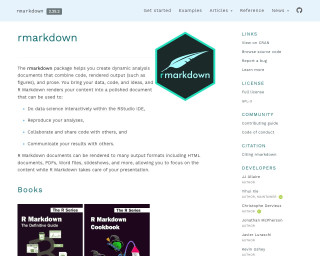
RMarkdown
The rmarkdown package helps you create dynamic analysis documents that combine code, rendered output (such as figures), and prose. It allows you to do data science interactively within the RStudio IDE, reproduce your analyses, collaborate and share code with others, and communicate your results with others. R Markdown documents can be rendered to many output formats including HTML documents, PDFs, Word files, slideshows, and more.
Go to Resource
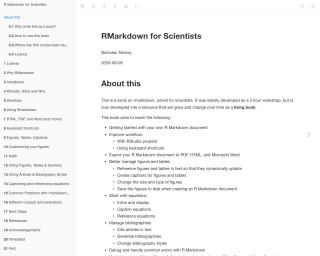
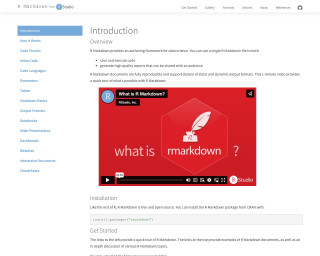
RMarkdown Tutorials
R Markdown provides an authoring framework for data science. It allows users to save and execute code, generate high-quality reports, and share them with an audience. R Markdown documents are fully reproducible and support various static and dynamic output formats. The R Markdown package is free and open source and can be installed from CRAN. The R Markdown website provides comprehensive documentation and resources for getting started with R Markdown.
Go to Resource
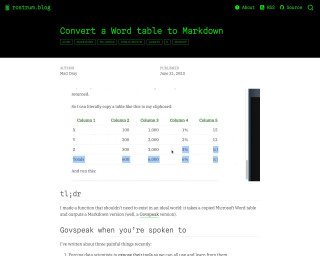

RStudio Shortcuts and Settings
Albert Rapp provides a guide for maximizing productivity in RStudio with shortcuts and settings. This post covers visual adjustments like themes, legibility improvements, and editor configurations, alongside tips for efficient code execution, debugging, and navigation. Rapp emphasizes starting with a clean environment, highlights key shortcuts for coding basics, file searching, command palette, and session management. The aim is to enhance user experience, reduce reliance on the mouse, and improve coding workflow. Ideal for R users looking to streamline their RStudio setup.
Go to Resource
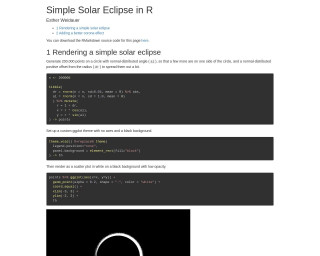
Simple Solar Eclipse in R
The tutorial 'Simple Solar Eclipse in R' by Esther Weidauer explains how to render a simple solar eclipse using R and ggplot2. It begins with generating points on a circle to simulate the moon's disk and then proceeds to add a corona effect, simulating the sun's atmosphere seen during an eclipse. Adjustments are made for a more realistic corona by creating subsets of points, assigning unique identifiers, and layering to produce the final visual effect. RMarkdown for the demo is available for download, encouraging users to try their hand at this elegant astronomical depiction.
Go to Resource
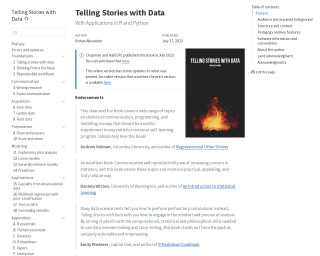
Telling Stories with Data
Telling Stories with Data by Rohan Alexander is a comprehensive guide on communicating insights effectively using data in R and Python. Published by Chapman and Hall/CRC, the book is endorsed by experts for its unique approach in emphasizing statistical communication, programming, and modeling. It covers the entire data science workflow, including data acquisition, analysis, and reproducibility, making it an excellent resource for statistics courses or self-learning. It focuses on developing the computational and philosophical skills necessary for sense-making and telling stories with data, making it a valuable tool for data scientists and analysts.
Go to Resource

Tidy Flowchart Generator
The Tidy Flowchart Generator, or the 'flowchart' package, is an R package designed for drawing participant flow diagrams directly from a dataframe, employing the tidyverse syntax. It offers a suite of functions that utilize the pipe operator to generate flowcharts conveniently and flexibly from dataframes. The package is accessible through CRAN and can be installed traditionally or via the development version on GitHub. The process of creating a flowchart with this tool is demonstrated through a GIF example on its homepage, showcasing its usefulness in drafting flow diagrams for clinical trials or similar studies.
Go to Resource
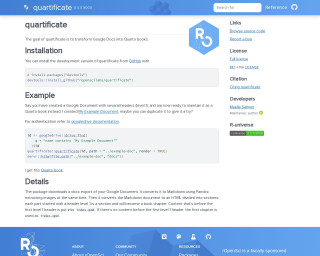
Transform Google Docs into Quarto Books with {quartificate}
The 'quartificate' package is designed to convert Google Documents into Quarto books, facilitating the transition from a simple document to a structured and maintainable book format. It streamlines the process by exporting the document into a Docx file, converting it to Markdown via Pandoc, and then sectioning it into HTML chapters based on header levels. This enables users to easily manage and render their content as a Quarto book. The package also provides seamless integration with Googledrive for authentication and document retrieval, and offers a quick start to render and view the book using the 'servr' package.
Go to Resource

Use meta shortcode variables with Quarto Includes to insert precise content - Posit
This blog post by Ashley Henry at Posit discusses how to use meta shortcode variables with Quarto Includes to ensure precise content insertion in your documentation. It delves into the benefits of using Quarto, a system for technical writing that enhances the insertion process by allowing for better customization and modularity. The post is targeted at users who are involved in the documentation process and are looking for methods to optimize content consistency while maintaining flexibility. Ashley Henry also shares her expertise from her time in the Navy and at Posit, where she focuses on clear and effective documentation.
Go to Resource
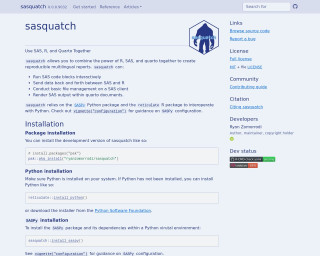
Use SAS, R, and quarto Together • sasquatch
sasquatch is an R package that enables the integration of SAS, R, and Quarto for creating reproducible multilingual reports. It utilizes SASPy and reticulate to run SAS code blocks within R, transfer data between SAS and R, perform SAS client file management, and render SAS output in quarto documents. The package includes installation instructions for development version, Python, and SASPy. It offers functionality such as interactive execution of SAS code, data conversion between R and SAS, and rendering quarto documents with SAS output, distinguishing it from similar packages like sasr, configSAS, and SASmarkdown.
Go to Resource

Using project scripts to keep Quarto source and output files organised
Pete Jones provides a tip for managing Quarto projects where the user wants to separate source (.qmd files) and output (.pdf, .html, etc.) files, especially when source files are in a subdirectory. The article addresses the problem that arises when Quarto's default settings place rendered output next to source files, which can create organizational issues in projects. The article intends to show how to overcome this by leveraging Quarto's features to keep files neatly organized within project subdirectories.
Go to Resource